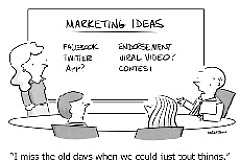 Are you trying to figure out how to help your workers adapt to the digital transformation process? If yes, you should check out our helpful guide here.
Are you trying to figure out how to help your workers adapt to the digital transformation process? If yes, you should check out our helpful guide here.
Digitization is probably a new term for many. “Digitalization refers to enabling, improving or transforming business process by leveraging digital technologies and digitized data,” according to API Product Management.
It has taken over our daily lives. It's also revolutionizing the business world, helping make lives easier and increase efficiency. Digitization can help companies reduce their overall costs by 3.6 percent while also boosting revenue by 2.9 percent. With the COVID-19 epidemic, the opportunity for reducing cost is substantial and the value of using these technologies to remain in business would be hard to undervalue.
A great deal of digitization has already happened and is a well-established business multiplier. We've moved more business onto the internet and relied on it for automation. [quotesright]Digitization causes tremendous workplace transformation, meaning complete change from the ground up in a department or even the entire company. [/quotesright]
Adapting your business to digitization in a short time frame like may are facing as a result of the COVID-19 crisis may seem like a high hurdle indeed. However, all it takes is a clear vision of what your goals are, research, careful planning, time, training, and diligence. Some digitization will deliver a high payoff while having a low implementation complexity while others, such as replacing manual processes like ordering, will have higher implementation complexity and take longer to pay off.
Identifying the high-payoff-low-complexity opportunities is the place to start and work down your list considering their complexity, cost and time to implement.
Digital Innovations in the Workplace
When we talk about digitization, we’re referring to advancements in technology. Usually, these have come to replace older, analog processes.
For instance, artificial intelligence (AI) is now used to automate manufacturing, cars, security, and more. The Internet of Things (IoT) helps connect billions of devices to make them more accessible and portable. Holding meetings using Zoom or GoToMeeting are examples of digitization as is online banking. Things you did in person are now routinely done online.
Transformation technologies like these are all around us. We can access them through in-home voice assistants and the programs we use on our phones. In the workplace, the technologies can help increase productivity and efficiency.
Some additional examples of digitization in the workplace include virtual assistants, video tools, and cloud computing.
[quotesright]By moving your work toward a more digital environment, you're making an investment that will lead to a more innovative company. [/quotesright]
Not all technologies may work for your company. It’s essential to integrate digital processes after you've already evaluated them. Think about how they can achieve business goals.
Steps Toward a Successful Transformation Process
Ongoing learning should be an essential part of your company culture before you begin a transformation process.
[quotes]Encouraging a learning culture in your company will keep your entire staff more agile and productive.[/quotes] They'll also be more willing to adapt to change. Make continuing education part of the norm. Show your employees that their continued improvement of skills and abilities matters to higher management.
You can start meetings by asking your staff what they’ve learned in their free time and what they think they would like to know more about so they can progress in their career. Let staff members choose what they want to learn and show how it will improve their work. Allocating part of your training budget to their personal education is a good way to help them develop as employees.
After you've built a solid learning culture, follow these steps:
- Structure your employee training so your staff knows what to expect and are involved in the planning.
- Open internal communications to make the process transparent.
- Promote collaboration among team members and chains of command.
- Update your office environment – that includes work-from-home or shared workspace facilities.
- Allow trial and error.
- Test and adapt your transformation process.
Structure Employee Training
Employee training can help increase your future business value. It sets your employees up for success by giving them the tools they need to help grow the company.
Your employee-training program should be thorough and personalized. If you’re implementing something like a virtual assistant, not everyone will use it the same way. Your customer support team will use it differently than your IT team. Make sure everyone is learning the new technologies in the way they’ll need to use them on a day-to-day basis.
You may wish to invest in new training opportunities, such as conferences. Try to understand the different methods that your staff needs. A thorough training program should offer something for everyone. Give your employees an equal opportunity to learn, whether it's in-person or online.
Each team must understand what you're asking them to do, and what you're requiring them to learn. Provide your staff with a training schedule early on. The schedule should also include learning milestones with the new technology. They’ll know when they can shift over to a training mindset so it doesn’t disrupt their day or endanger their workload. Make it clear how long training will last.
Open Up Internal Communication
[quotes]Open communication is what makes a transformation easier.[/quotes] Before you start your process, understand that most of your staff won't want to change. No one likes to alter what he or she has been doing for months or years, especially if they’re comfortable. An incredible 70 percent of change efforts fail immediately due to employee resistance!
Here are some tips on how to make people part of the solution and not the problem. Keep everyone in the company updated and ask for their feedback as well. What’s best is if you can bring your staff into decision making. Allow them to customize new technologies to their liking or based on their needs.
[quotesright]The questions everyone is asking themselves that you need to address are: “What’s this mean for my status? Am I going to lose my authority as the go-to person? Will I be demoted?” [/quotesright]
Help your staff understand how the change will affect and benefit them individually.
The goal of internal communication should be to make your team as comfortable as possible. If your management team wasn't available in the past, now is a great time to get them front and center.
Make it clear that all communication should be honest and productive. Employees should be able to voice their concerns or problems free of any judgment.
Keep your staff involved in the process. Consider a dedicated forum where staff can ask questions or express their problems. Offer the method that works best for them, whether it’s a dedicated phone line or email address, a web meeting, or a personal chat. Ask them if there's anything they think would improve the process.
Honesty, clarity, involvement, and frequent communication are your friends in making change work be it to digitization or anywhere else.
[sidebar]
Need Help Implementing Change or Dealing With Other Business Issues?
Let’s talk about what’s on your mind. No obligation. Simply get in touch for a confidential discussion of your situation. Let's set up a time to talk. Brian Tracy USA: 877.433.6225 Email Me
[/sidebar]
Promote Collaboration
[quotes]Teamwork is one of the best ways to speed up learning.[/quotes] Allow cross-functional teams to come together and share their knowledge. You may have older employees who aren't as quick at learning new technologies. Younger employees can teach them while also getting to know colleagues who they normally wouldn't have much contact with.
 Bringing your teams together will also improve your overall company culture. Learning new processes together will prepare you for any type of change.
Bringing your teams together will also improve your overall company culture. Learning new processes together will prepare you for any type of change.
Identify change leaders who are excelling at new programs or systems. These employees can serve as company advocates. Allow them to answer questions one on one and even host individual workshops. Highlighting successful users encourages others to reach the same milestones.
Collaboration is usually more effective when it's face to face, but you can also invest in new collaboration tools.
Update the Office Environment
A collaborative culture will enjoy a new environment. Allow your employees to come together throughout the day. Limit closed-door policies (Do you even need these anymore?) during this time to help foster more questions.
You may also want to choose specific areas in the office for collaboration. Innovation is more likely to succeed when people can get out of their normal surroundings. Encourage your staff to work away from their desks part of the day. A simple change of environment has often stimulated creativity.
You can also allow your staff to work together with many different teams. The less red tape, the easier it will be to promote the freedom for collaboration. Teams that usually don't communicate can share their experiences. You don't need to alter the entire workday but leave room for a change of pace and transformation.
Updating the office environment allows team members to explore new technologies together. If anyone is having difficulty, this gives them the chance to find support among their colleagues.
Allow Trial and Error
[quotes]Successful transformation should allow for trial and error. This means employees can experiment free of fear.[/quotes] Since it's a learning process, allow your staff to familiarize themselves at their own pace. As they're learning, they might discover new methods and bring these to the company.
During this time, remove micromanagement. You should require employees to stick to the training schedule but allow them to do so at their own pace if needed.
Give everyone time out of the day to brainstorm and work freely. Encourage everyone to develop new concepts or methods for how you can use new technologies. Highlight successes, and don't consider mistakes as failures, treat them as learning experiences. If you focus on mistakes, your employees will get discouraged easily, demotivated, and be less likely to invest their time in new technology.
Evaluate and Adapt
After you’ve implemented a digital transformation process, you still need to adapt as time, needs and people change.
Is anyone misaligned or still confused about what they’re doing? You don’t want to leave anyone behind because productivity and morale will suffer. Identify workers who can be team leaders in the change management process. They can analyze how team members are doing and work with them and their groups to set things right.
Over a few months, you may need to update your training or even integrate a new process. Looking back on your experience with implementing other changes will help. Was it easy to stay on track with your training timeline? Did a new project fail due to the new technology? Which were the biggest hurdles you had to overcome? These questions and others will help you plan and implement your next change more easily.
[quotesright]Digital transformation is more than technology, it’s people. (It’s always about the people!) Success in making changes will depend on company culture and how you approach making changes. [/quotesright]














